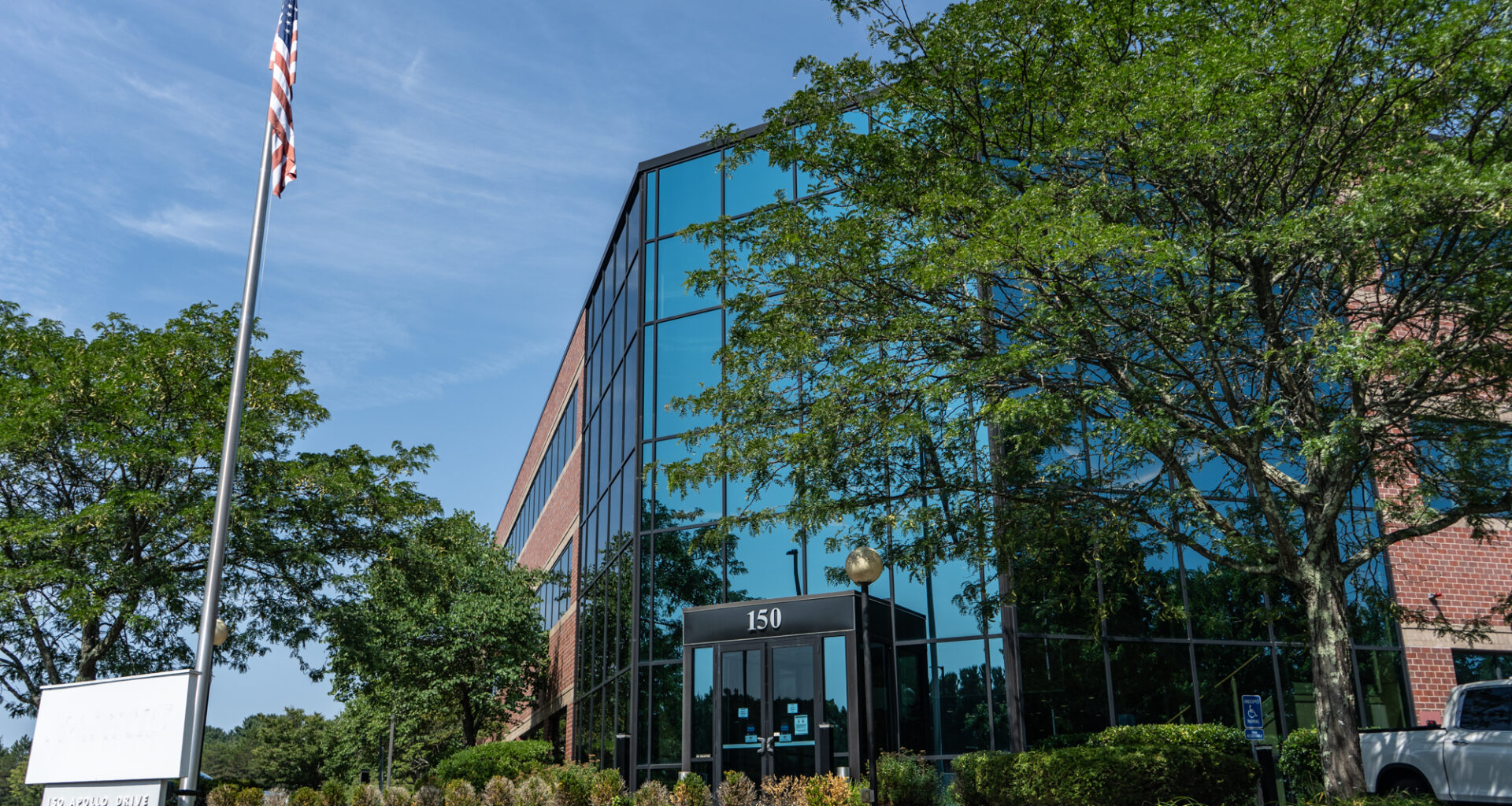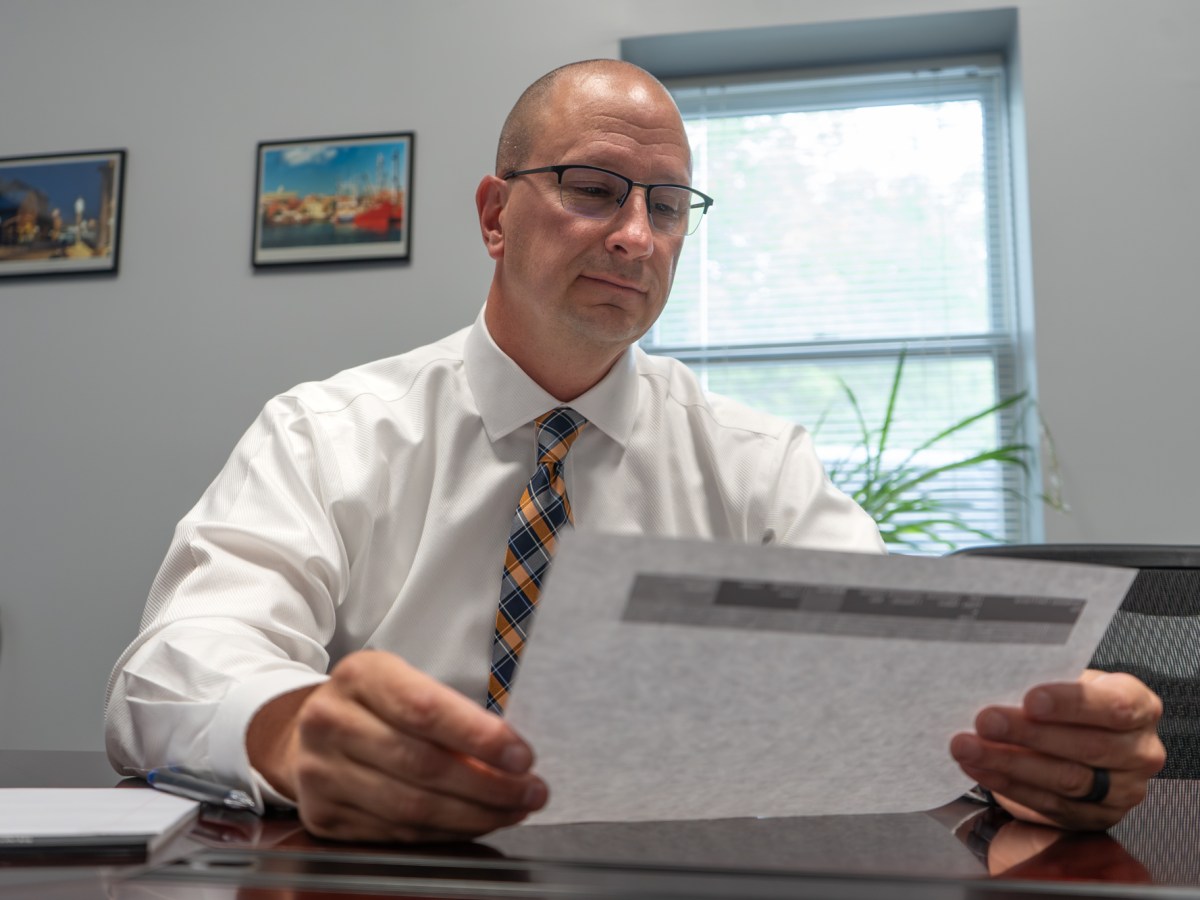An immigration judge cleared the way for the release of a New Bedford teen after terminating removal proceedings Thursday morning in Chelmsford Immigration Court.
Immigration Judge Christine Olson terminated removal proceedings against Luís David Ajtzac Osório, 18, who has been in the custody of U.S. Immigration and Customs Enforcement at Plymouth County Correctional Facility for almost a month.
A special immigrant juvenile, Osório represents a status that has come into the crosshairs of the Trump administration’s mass deportation campaign as authorities struggle to meet a reported national quota of 3,000 arrests daily. Several policies and decisions by the Board of Immigration Appeals have put these children’s access to legal permanent residency at greater risk.
But in Osório’s case, the termination means that ICE must immediately release him, said Ondine Gálvez Sniffin, his attorney.
“I demand that he be released today, but that is what we are all working towards now,” she said after the decision. “The only reason to have him in custody is if they have some action against him and the judge just ruled that’s terminated.”
Olson based her ruling on the 2022 decision by then-Attorney General Merrick Garland in the Matter of Coronado Acevedo. That decision said that immigration judges can terminate removal proceedings when they prevent U.S. Citizenship and Immigration Services from adjusting the immigrant’s status. That includes special immigrant juveniles applying for legal permanent residency, or awaiting their dates to apply for it.
U.S. Department of Homeland Security Assistant Chief Counsel Renee LaRosee reserved the right to appeal the case.
Twilight status
Special immigrant juvenile status is meant for unaccompanied alien minors who can prove abandonment, neglect, or abuse by parents in their home country. It was previously viewed as an accessible pathway to legal permanent residency.
Osório entered the U.S. as an unaccompanied alien minor at age 15 in April 2023. In January 2025, immigration officials granted him SIJ status and “deferred action,” making him a low priority for immigration enforcement, after the New Bedford Probate Court found his parents had abandoned and neglected him.
In 2022, the Biden administration began automatically granting deferred action to all children who arrived in the U.S. after parental abandonment, abuse, or neglect. The Trump administration canceled that policy on June 6. The policy change also stated that those already deferred action would “generally retain” it.
The confluence of those changes, plus the alleged quotas, places SIJs in a particularly vulnerable position.
“We call them twilight or liminal status people,” said Kathleen Bush-Joseph, a policy analyst at the Migration Policy Institute. That’s because deferred action is discretionary, so one never knows when it may be revoked.
Federal agents took Osório into custody during a contentious early morning operation in Fairhaven on Sept. 19.
Lawyers for Osório immediately filed a writ of habeas corpus in U.S. District Court Massachusetts on his behalf. According to those documents, agents immediately took him and two other Guatemalan men to U.S. Immigration and Customs Enforcement’s Burlington Field Office.
However, agents swiftly moved Osório to a plane at Hanscom Air Force Base in Bedford, where they placed him on a plane ready to transfer him out of state. Only a stay of transfer order issued by Chief Judge Denise Casper forced authorities to remove him from the plane. They transferred him to Plymouth two days later.
According to the petition, U.S. Citizenship and Immigration Services canceled his deferred action that same day and sent a letter to Sniffin that arrived at her office on Sept. 25.
“This is a new tactic,” Sniffin said.
In his response to the petition, Assistant U.S. Attorney Michael Sady — arguing on behalf of the U.S. Department of Homeland Security — confirmed cancellation of deferred action that same day. This move has some analysts concerned.
“That’s so interesting in this case,” Bush-Joseph said. She added that she was unaware of Citizenship and Immigration Services making such a move in another case.
A 2024 Migration Policy Institute Report found there were about 80,000 special immigrant juveniles in the country who, like Osório, are waiting for the opportunity to adjust their status.
According to an amendment to the habeas petition, Osório did not flee when agents surrounded the van in Fairhaven on Sept. 19 due to his belief that the deferred action and his valid work permit guaranteed his right to stay. But Osório said the agents told him his documents were “trash” and “no good here.”
Sady contested the characterization in his response, saying that Osório attempted to flee and collided with an ICE agent, causing both to fall to the ground. He then struggled to free himself before agents gained control of him.
Bush-Joseph said that those with Deferred Action for Childhood Arrivals — also known as DACA, an Obama-era protection for those who came to the U.S. as children — have generally been released when detained. But the fate of other forms of deferred action are still unclear. This creates a gray area for those SIJs.
“I saw that a couple of them have been released, but of course DACA is generally a kind of more revered status,” she said. “The deferred action for SIJ kids has been very unclear.”
SIJ status gives a person a legal avenue to adjust their status to legal permanent residency. DHS acknowledged in court filings that Osório has no criminal record.
Greater difficulty in leaving detention
Previously, immigration attorneys have frequently used bond hearings to get people out of immigrant detention.
However, immediately after entering office, Attorney General Pam Bondi removed nine members of the Board of Immigration Appeals — the nation’s highest immigration court. All were appointed by former President Joe Biden. In April, she reduced the BIA’s membership from 28 to 15.
Since then, the BIA has issued a number of decisions that critics of the administration view as enhancing Trump’s hardhanded deportation tactics.
“Attorney General Bondi fired [nine] judges and replaced them with a rubber stamp crew,” said George Pappas, a former immigration judge at Chelmsford who was terminated in July.
In September, with The Matter of Yajure-Hurtado, the BIA said all those who entered the U.S. without prior permission are subject to detention without the right to a bond hearing. The limited independence of the immigration courts means that lawyers for detainees often turn to the federal district courts instead.
“We at the immigration courts have been placed in the executive branch under the Attorney General,” Pappas said. “We have much less independence than Article III judges; therefore, it appears we are totally controlled.”
On Sept. 30, the American Civil Liberties Union Virginia Chapter filed a writ of habeas corpus in the U.S. District Court in eastern Virginia on behalf of four Venezuelan SIJs whom ICE took into custody in August and September. They all had their deferred action removed after arrest.
The petition also seeks to form a class action, saying that SIJs have been illegally subjected to denial of bond hearings.
A representative for the Virginia Chapter of the ACLU declined an interview request.
Last-minute reprieve
Alexandra Peredo Carroll, who represents Osório in U.S. District Court, said the habeas petition has become a more necessary tool in the kit of attorneys. She pointed out that her client was already being transferred out of the district mere hours after his detention.
“They are using military jets to fly people out of Massachusetts,” she told The Light. “And our client was in fact on an airplane when we filed the habeas.”
It remains unclear where authorities had planned to take him.
This fits a pattern that experts say is becoming more frequente.
“We are seeing the transfers [out-of-state] happen a lot quicker,” said Christy Rodriguez, a immigration attorney at the Massachusetts Law Reform Institute, a legal services nonprofit. “[The transfers] are interfering with their access to counsel and due process rights.”
Rodriguez said the rapid transfers seemed to increase in early September once detainee flights resumed out of Hanscom following a two-month pause. Many flights have transferred detainees to ICE’s Buffalo Service Processing Center in Batavia, New York.
For instance, Pascual Cuin González, a New Bedford asylee picked up by ICE on Sept. 12, was moved to Buffalo within 24 hours, The Light previously reported. He was transferred again to a prison in Pine Prairie, Louisiana, where authorities released him on Sept. 18.
Hegseth named as respondent
Osório’s habeas petition names a respondent not generally associated with immigration proceedings: Secretary of War Pete Hegseth.
“I have not seen that on a widespread basis,” Rodriguez said. “But it is starting to happen.”
She said that with the restarting of flights out of Hanscom, it is likely that attorneys find it necessary to include Hegseth, as they may not know under whose custody a person is at the moment of filing. It is a way to cover one’s bases.
Osório’s petition also included Antone Moniz, superintendent of the Plymouth County Correctional Facility, where Osório was moved after Burlington. The petition also named three federal officials often included in immigration cases at U.S. District Court Massachusetts: Secretary of Homeland Security Kristi Noem, Acting ICE Director Todd Lyons, and Patricia Hyde, the director of the Boston ICE Field Office.
The amended petition alleged poor conditions in Burlington, saying ICE fed Osório only two small cups of oatmeal on the morning of Sept. 20, a full 24 hours after his arrest. He ate on Sept. 19 only because other detainees shared their food with him. Authorities transferred him to Plymouth on the 20th.
Sniffin said that she is waiting to see if DHS follows the immigration judge’s decision and releases Osório. As of 4:30 p.m. Thursday, Osório remained in ICE custody.
“I’m excited because I feel good for my client. He’s a young kid and has not been doing well while in custody for almost a month,” she said. “He has a lot of anxiety and his hair has been falling out.”
But she said she still will temper that hope until he is out.
“I’m nervous that ICE would try to hamper his release in some illegal way.”
Meanwhile, Osório’s habeas petition in district court remains active.
“This kid is an incredible kid,” Carroll said.
“There’s zero reason for them to have arrested this kid,” she continued. “It’s incredibly unfair how they treated this kid.”
Kevin G. Andrade can be contacted at kandrade@newbedfordlight.org.
October 15, 2025October 15, 2025
October 7, 2025October 8, 2025


